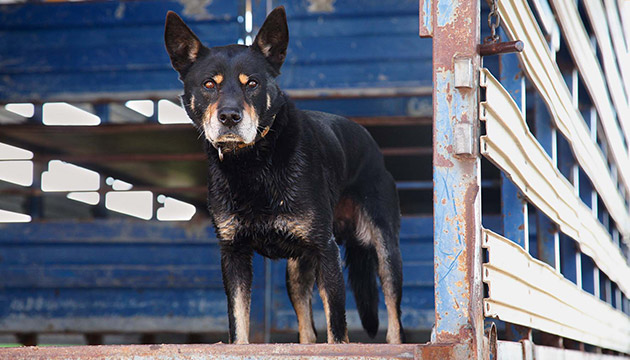Working dogs have been an essential part of Australia’s agricultural journey and, despite mechanised transport, the market for well-trained dogs has never been stronger.
Story By Genevieve Barlow
When Terry Eason's dog died a few years back, the rum-drinking, bachelor truckie, grief-stricken, took a fortnight off work. “People understood,” he says. The Kelpie-Border Collie cross got caught beneath the wheels of a tractor. For ‘Trucker Man’ Terry, the blow was huge. “He was brilliant,” he says of his mate. “If someone said to me they had the best dog in Australia, I would have said, ‘Let’s get a mob of sheep out and test my dog against yours’. I’d have backed mine any day. I never spoke to him. He just knew what to do. He’d be over the back of the sheep and drop down and he’d keep doing that ’til we got the sheep loaded or unloaded. He knew when to bark. He was a red Kelpie. You wouldn’t believe it, but I called him ‘Blue’.”
Blue is one of 11 dogs that, in 36 years of shifting livestock across Australia, has won a special place in Terry’s heart.
On days too wet, too windy or too dusty to travel in the dogbox underneath, Terry’s dogs go business class, travelling in the crate. At night it’s first class in the sleeping compartment. Like tens of thousands of working dogs across the nation, Terry’s current trio of Kelpie-Border Collie crosses, ‘Wal’, ‘Boozer’ and ‘Splinter’, are much more than workers. They are companions. For farmers, drovers, truck drivers, fencers and station workers, it’s the same. And when their four-legged companions go to the big kennel in the sky, hardened men and women weep.
Some say that without working dogs we would never have gotten on the sheep’s back, starting Australia’s agricultural journey. Some say that in recent decades, when wool prices slumped and we got off the sheep’s back and took up mustering on motorbikes, we lost valuable connections with the working dog – the ability to train it well, for example. But with labour costs high and farmers running more country with less people, the working dog is now assuming a greater role than ever in life on the land
This story excerpt is from Issue #80
Outback Magazine: Dec/Jan 2012










